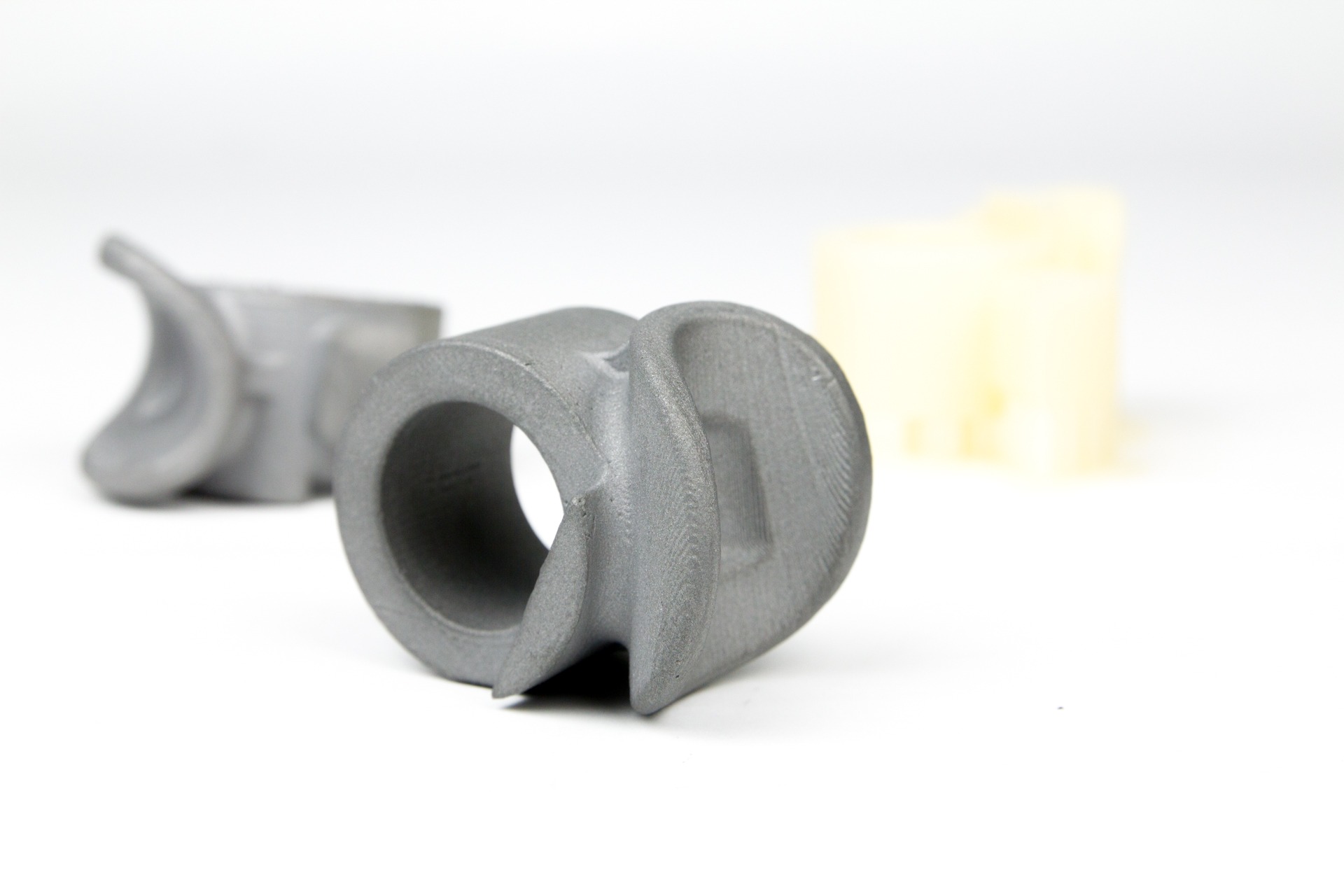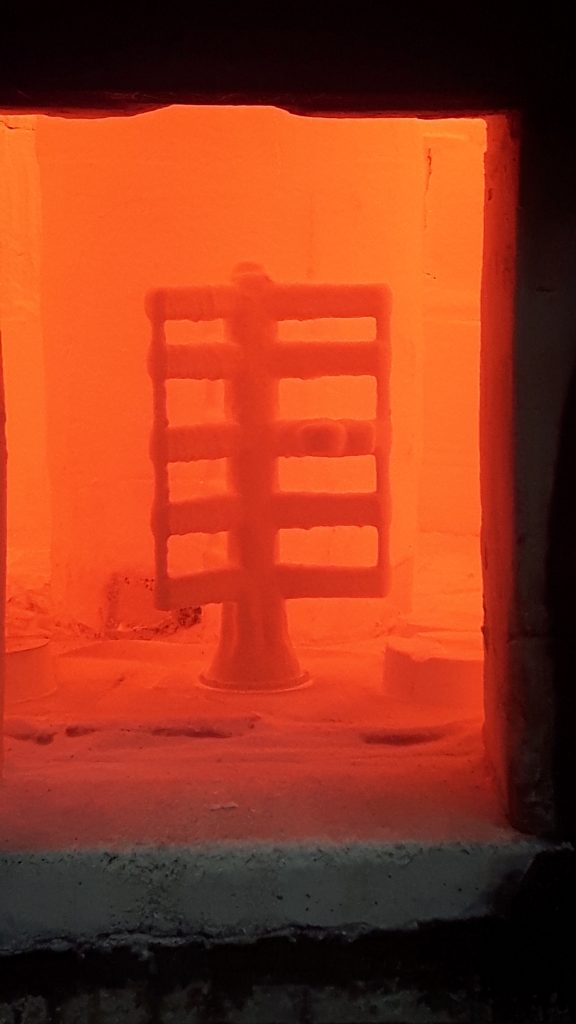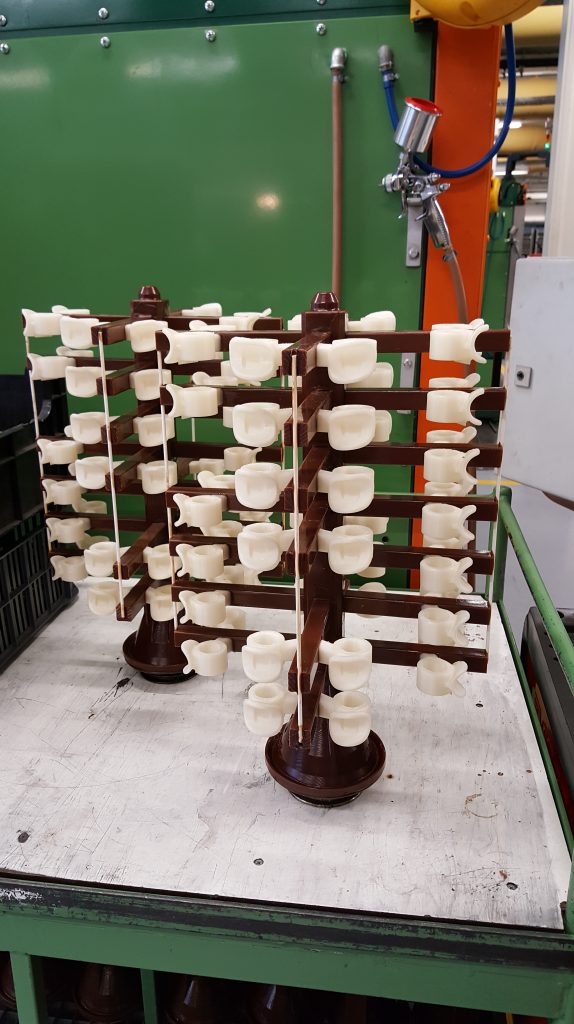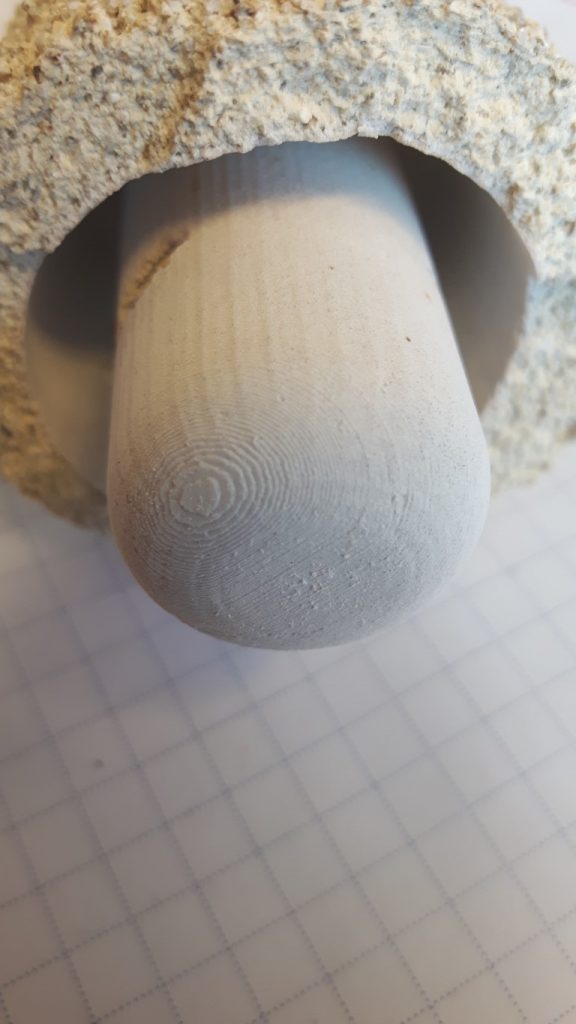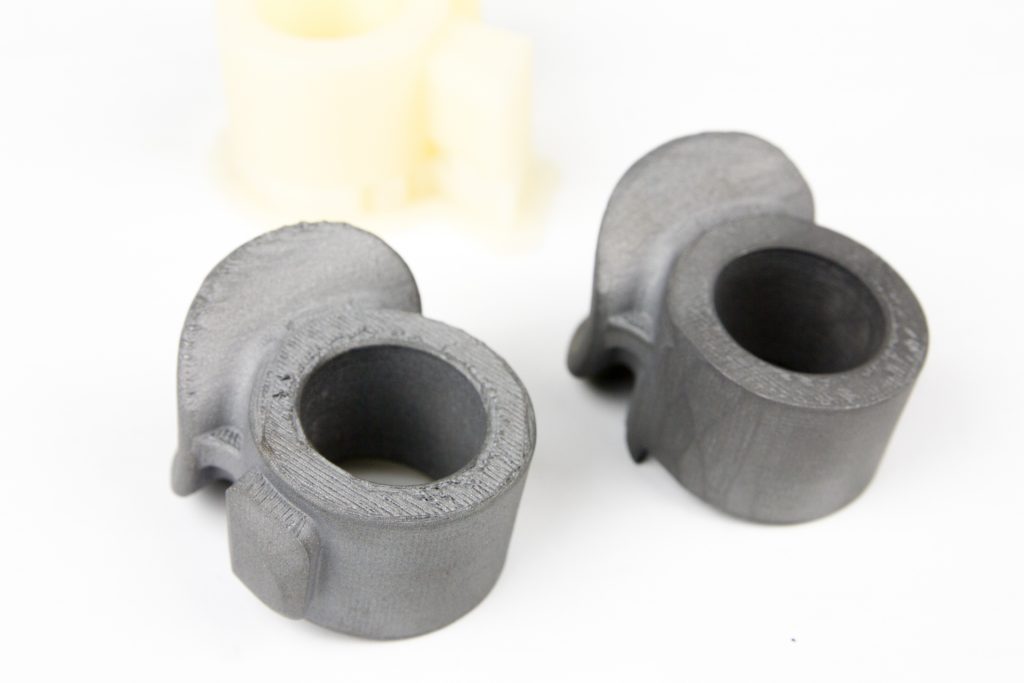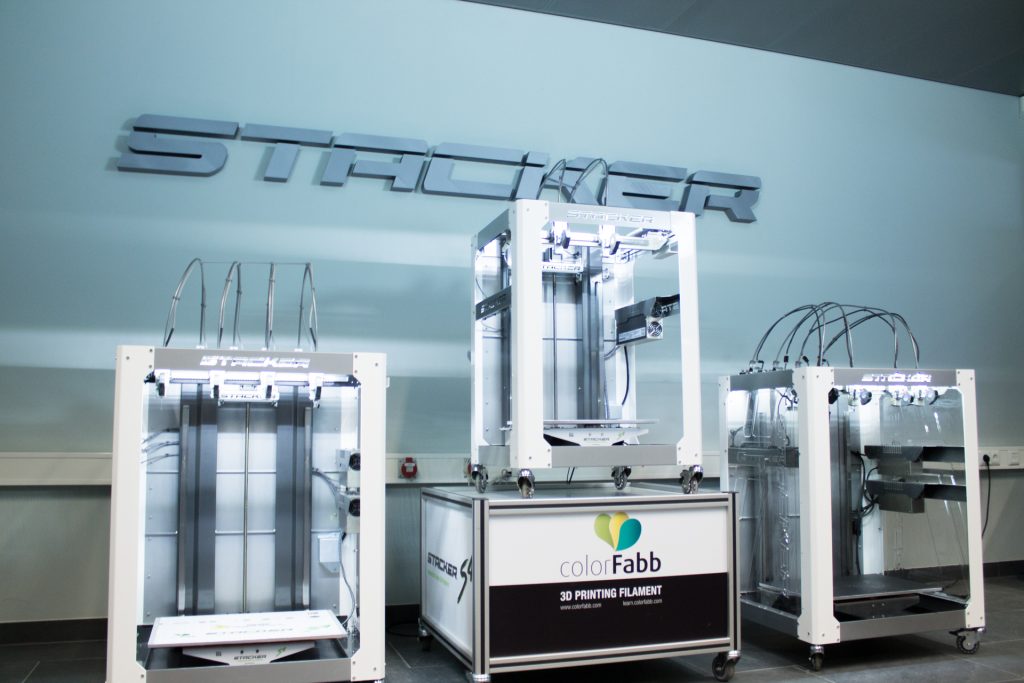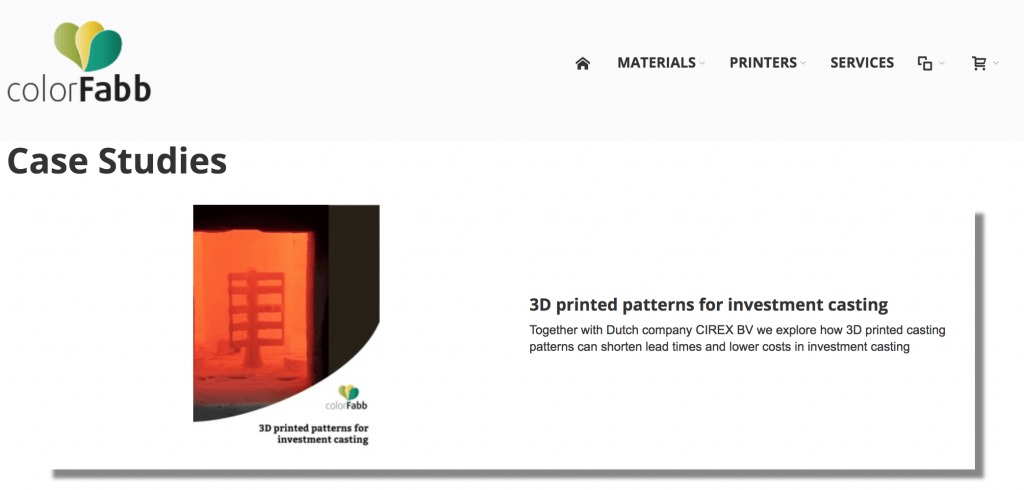Last year we learned that 3D printing was used to drastically shorten time and costs in investment casting. Dutch company CIREX B.V. is an expert in investment casting and is exploring the added value 3D printing can bring to their process together with colorFabb.
We partnered with CIREX to better understand how PLA/PHA performs as a material for patterns. We have written exensively about this filament before. Traditionally investment casting uses wax patterns. These patterns are made using metal molds, making the tooling is an expensive process and can take several weeks.
For small series, or one off products creating a mold is not a cost effective solution for foundry companies. 3D printing on the other hand presents several advantages enabling foundries to make single parts or even small series.
Instead of investing in tooling, foundry companies can choose to 3D print their patterns in a material suited for investment casting. ColorFabb PLA/PHA Natural is a material uniquily suited for investment casting. It’s an easy printing material capable of creating complex shapes with great smooth surface finish and will work with most desktop and industrial type FFF 3D printing machines.
The material decomposes at 600C and ensures a clean burnout leaving behind a clean mold ready for casting.
Almost a year ago we highlighted US based Spectra3D’s work in investment casting, using the Stacker S4 and our signature PLA/PHA. Jerry LePore, CEO of Spectra3D explains why he chose PLA/PHA: “We chose Colorafab natural PLA because it contains no color pigments, prints great and burns out really clean from the mold.” You can read the full blog here.
Cut down on development time
Skipping the tooling development step saves a huge amount of time. Typically this could shorten the time to a first metal casted part by 3-4 weeks. Not being dependent on a third party mold supplier also reduces risk in time sensitive projects.
A wax tree with the printed models
3D printing also allows for faster design iterations, a first printed pattern could already be made in several hours depending on the size of the part. This makes it possible to iterate on the design multiple times even within a single day.
The material cost of printed patterns is around €30,- p/kg. Parts are generally printed with the least amount of material needed, which saves print time and material.
Checking out the burnout of PLA/PHA Natural, breaking the mold to inspect pattern for residue. Patterns printed on the Stacker S4, 0.2mm layer height at 20% infill.
3D Printer & Material combination
The Stacker 3D printer was used for this test case. It prints incredibly reliable with PLA/PHA and is able to print parts accurate and consistent. Printing with multiple nozzles cuts down on series production time, 2x faster for the Stacker S2 and 4x faster for the Stacker S4 compared to a single nozzle FFF 3D printer.
The Stacker S2 and S4 can be set-up for small series production, or single large part printing. Mounting up to 4 toolheads on the x-carriage gives the user higher output, but reduces the build volume. The alternative is to mount only a single toolhead and take advantage of the entire buildvolume of the S2 or S4.
Products larger then the build volume of the Stacker can be split into multple parts and assembled after printing. Using pins align the parts is a good method to ensure the assembled model is accurate.
The Stacker S2 and its larger sibling the Stacker S4 is an industrial grade FFF 3D printer. Multiple print heads and a large build volume make it a versatile printer. Small series production or large scale prototyping are no problem for the Stacker printers! This US based printer is very reliable and is a perfect match for any professional looking for serious 3D printing. You can find the full product specifications on our dedicated Stacker page.
For Stacker the term “industrial grade” is not a hollow marketing term. It means their printers are designed for extra long service life, extremely low maintenance and that the printer will maintain its positional accuracy throughout its life cycle. This printer has been designed to be used in a professional environment, be it for large prototypes or small series production.
colorFabb is proud partner of Stacker and official distributor for the EMEA region. At colorFabb we have been extensively testing with both the S2 and S4 in our print lab with our entire range of filaments.
About CIREX
The history of the current CIREX starts in 1947. In the physics laboratory of Philips in Eindhoven, an experimental wax model foundry was set up. From these beginnings CIREX has developed as a development partner and producer of high-quality precision castings in steel, produced according to the “lost wax” process. CIREX has built up a good reputation and recognition among international customers.
You can find more information about CIREX’ rich history on their website.
colorFabb Case Studies
This blog is a first in a new series of how colorFabb filaments are used in different industries – some old, some new. We will collect these case studies as downloadable PDFs on our website: Click here.
